feature image via yumyummyyums.tumblr.com
Taco Tuesday is a biweekly column all about tacos! We’ll dive into a lot of delicious topics ranging from the history of tacos to the gentrification of the taco to the exploration of various kinds of tacos and how they came to be. #tacosaretruth
When you think of tacos, there’s probably two universal images that cross your mind: a fried corn u-shaped tortilla shell filled with ground beef topped with lettuce, tomato and orange cheese or freshly made corn tortillas filled with al pastor topped with cilantro and onions or with piña and sprinkled with lime juice and salsa. These two versions of tacos are deeply ingrained with our associations to tacos, no matter if we eat these kind or not. Both are (unfortunately, in the case of the fried corn shell taco) pivotal to taco history.
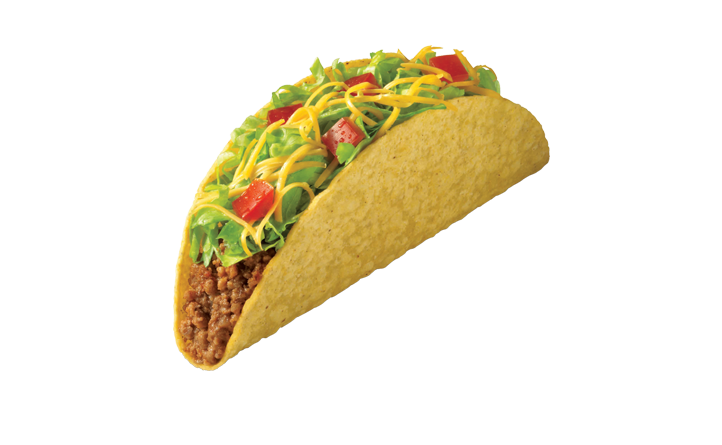
We’ll talk about this guy later.
Taco history isn’t as clear-cut as one would think. One thing is certain — the origins of tacos are unknown. The taco is influenced by thousands of years of Mexico’s food history but has only dominated Mexico’s cuisine in the 20th century. It’s evolved rapidly since the day the taco was called a taco in the late 18th century making it hard to define its authenticity. With that in mind, I’m going to give you a rundown of key events and points of how it all began.
Mas Maize
Without maize, there wouldn’t be any corn tortillas which is the main vehicle for tacos. Maize was deeply significant and at the center of Aztec and other indigenous people’s diets but consistently eating it raw was dangerous because of the corn’s lack of niacin, or vitamin B3, which led to pellagra, a deficiency disease that causes skin rash, intestinal problems, insanity and death. At some point, indigenous people discovered a process called nixmatalization that reduces the toxins in corn that induces pellagra. Dried maize kernels were soaked in an alkaline solution made of lime and ash that did not contaminate the maize. The kernels were steeped in the liquid for a day, which loosened the kernel’s husk and absorbed the many minerals created in the alkaline solution. The kernels became easier to grind to make masa. The chemical reaction improved the flavor and aroma of the masa and allowed it to keep a firmness necessary for the kneading and stretching to eventually create tortillas or tamales. Most importantly nixtamalization allowed Aztecs to live on an almost all-corn diet, without dying, since time immemorial.

From the Florentine Codex so Aztecs through the eyes of the colonizer.
I just want to point out that since the beginning, indigenous, Mexican and Mexican American women have always been at the forefront of making food for their families and essentially making tacos for them. Food historian Jeffrey M. Pilcher notes in Planet Taco: A Global History of Mexican Food how hard women worked to make tortillas and other corn-based foods. “However nutritionally sound, the recipe for tortillas required enormous physical labor from women. Arguably, they worked as hard grinding a corn on the metate as did the men they fed who constructed the physical monuments of Teotihuacán, the pyramids of the Sun and the Moon.”
With the Spanish conquest of the land we know as Mexico, beef, pork, chicken — today’s common taco fillings — were introduced to indigenous people, making the taco a very mestizo tradition. Lard was also introduced into the indigenous people’s diets which gives tamales their soft, fluffy texture and which is also used to create flour tortillas, depending on who you ask. While chili and chocolate from Mexico was traded and became globalized, corn did not because it was associated with lower class indigenous people. When maize arrived in Spain and the rest of Europe, the Spanish didn’t know the methods of nixtamalization so it led to pellagra. So in the Spanish’s eyes, corn was equated to poor people and disease while wheat was associated with Spanish conquistadors and the elite class. The origins of flour tortillas aren’t clear but it probably was influenced by Spanish colonizers forcing indigenous people to use wheat instead of corn. For people living in Northern “New Spain” they made mostly flour tortillas because of regional patterns of agriculture. Pilcher notes in his book:
“From a material perspective, it was a relatively easy way for rural women to prepare wheat without the time and expense of making either risen bread or corn tortillas, as folklorist Arthur Campa has noted. ‘Wheat tortillas replaced the corn product in Hispanic homes in northern Mexico and most of the Southwest. It was considerably easier and faster for the housewife to prepare the biscuit-like dough and roll it out than go through the long process of making nixtamal,’ he explained. ‘With wheat tortillas she could have bread on the table in a matter of minutes.’ Convenience was certainly important for hardworking frontier women, but such a calculation was valid only when both grains were affordable, a late colonial phenomenon at best.”
A Linguistic Evolution
The first Mexican cookbook, El Cocinero Mexicano, was published in 1831 and included recipes for tamales and quesadillas but not for tacos. The first time the word “tacos” appears in print in Mexico in reference to food is in the 1891 novel Los bandidos de Río Frío by Manuel Payno. In the book a group of indigenous people are dancing in honor of the Virgen de Guadalupe and feasting on tacos filled with fried goat. This led to the word being introduced to the Mexican dictionary the Diccianario de majicanismos a few years later in 1895.
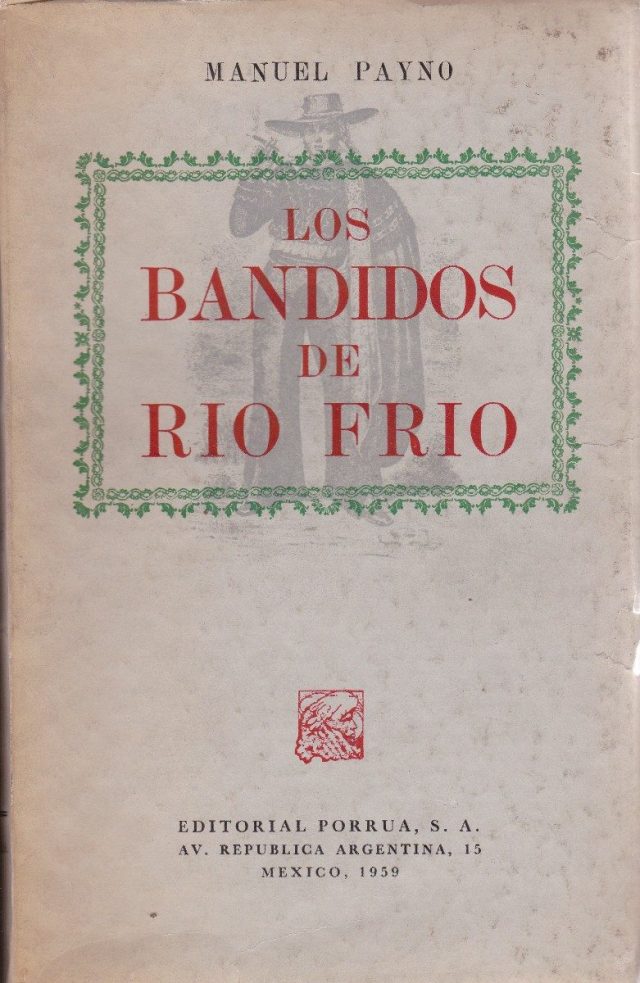
But before that, the use of the word “taco” in reference to food varies. Some cite it comes from the Nahuatl word quauhtaqualli, the name Aztecs used for a dish similar to tacos, which the Spanish couldn’t pronounce so they used taqualli and with time, it became taco. Others believe it’s derived from the words tlaco and tacol. Another theory put forth by Pilcher in Planet Taco, is that the word dates to the 18th century and came from the Real del Monte, a silver mine north of Mexico City, where “taco” referred to explosive charges miners used to excavate the ore. They were pieces of paper wrapped around gunpowder and inserted into holes carved in the rock. The word was derived from the use of powder charge for a firearm and from the word’s general meaning of plug.
The Mexican War of Independence and other civil wars and economic unrest impacted the silver mines hard which forced many of the workers to migrate in search of work. Unemployed miners brought their tacos to Mexico City where other city workers found the miner’s tacos portable for lunch. One clue that supports this miner theory comes from an early visual record of the taco. One of the first photographs of a taco is from the 1920s and shows a woman selling tacos sudados to a group of paperboys. The tacos were made by frying corn tortillas briefly and then filling them with potatoes and salsa and then were kept warm in their own steam in a basket. Later they were called tacos de canasta. But tacos sudados’s original moniker was tacos de minero, a common phrase among the taco stands in Mexico City in the early twentieth century.
Taco Bell Has Always Been The Worst
In the early 1900’s Mexican migrants arrived in the U.S. to work in mines and on the railroads and brought along their recipes, including tacos. In the U.S., Mexican food was seen as street food and associated with the lower class; they were seen as dangerous (as in unsanitary), too spicy and exotic.
With the children of Mexican immigrants starting to advance economically and gaining their citizenship, they opened restaurants around the country. Contrary to popular belief, Taco Bell founder Glenn Bell wasn’t the first to create a crispy fried corn shell — it was Mexican Americans. Tacos dorados or fried tacos became popularized in the 40s and appeared in Mexican cookbooks and restaurants. The actual process of frying the tortillas was arduous since cooks had to maneuver the tortillas in hot oil to get it crisp on all sides while making it into a u-shape. One restaurant owner decided to take matters into his own hands and invent a contraption to prevent his cooks from scalding themselves. Juvencio Maldonado, a Mexican immigrant and owner of Xóchitl restaurant in New York City was the first person to patent his torture-looking device for frying tortillas. He filed his patent in 1947 and was awarded it in 1950.
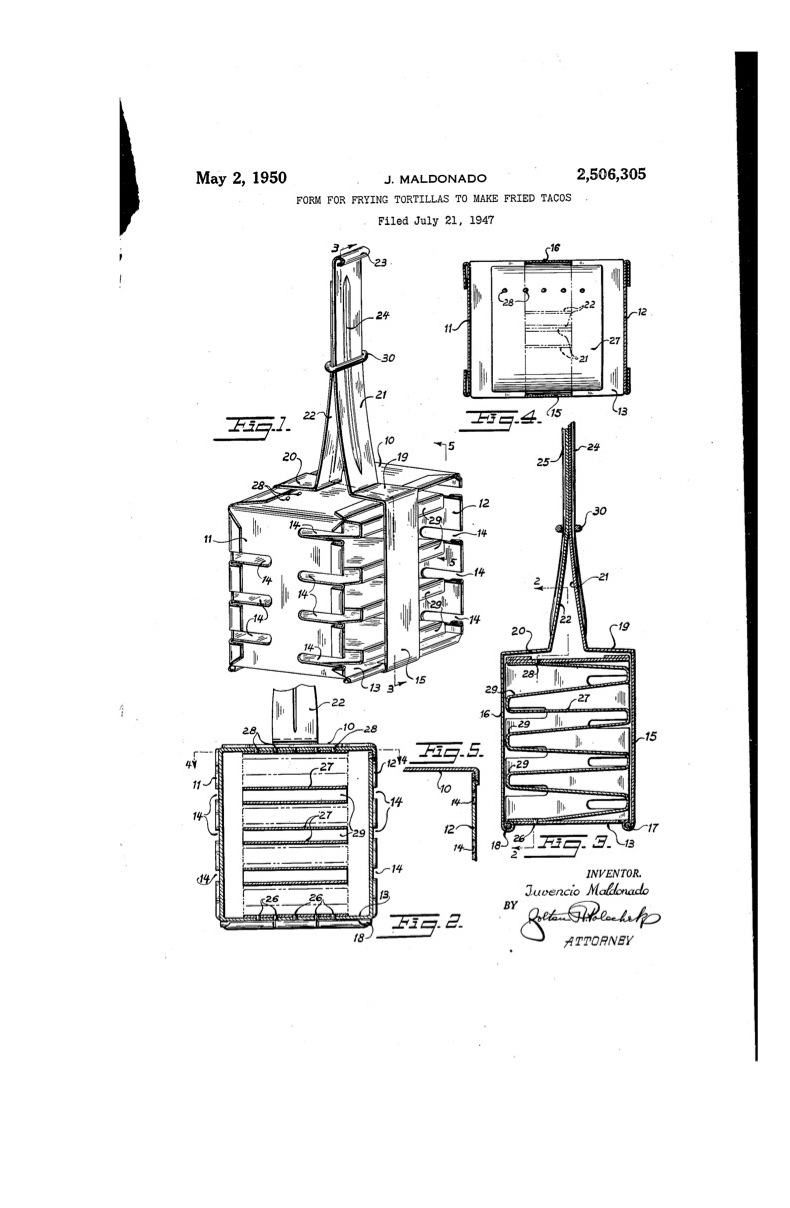
The first taco fryer patented by Maldonado in 1950.
Long before Glenn Bell opened his first taco fast food chain, Mexican Americans were already making and selling fresh crispy tacos. In fact, Bell stole the idea from the Mexican restaurant across the street from his hamburger and hot dog stand in San Bernardino in 1950.
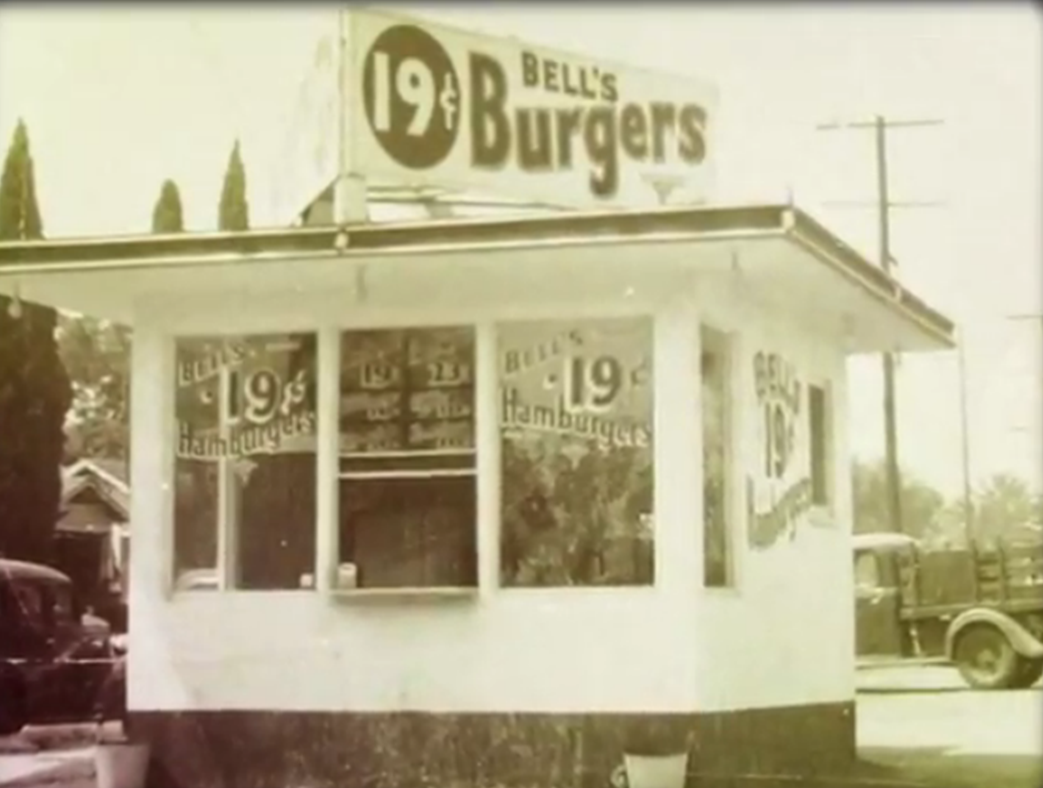
As the story goes, Bell opened Bell’s Hamburgers and Hot Dogs in 1948 with hopes it would take off just like McDonald’s. He noticed more and more that non-Mexicans were eating Mexican food and thought tacos were the way to beat McDonald’s. He opened a third Bell’s Burgers in 1950 in San Bernardino’s West Side and across the street from Mitla Cafe, a Mexican restaurant. He frequented the restaurant and ordered the tacos —a freshly fried corn tortilla filled with ground beef and topped with shredded cheese — countless times in order to replicate them late at night after closing his stand. In Gustavo Arellano’s Taco USA: How Mexican Food Conquered America, Irma Montano, whose in-laws opened the restaurant, recounts how often Bell would come in the family diner. “My father-in-law would say Mr. Bell kept asking about the tacos, how he made them, and so my father-in-law finally invited him into the kitchen to teach him,” she said.
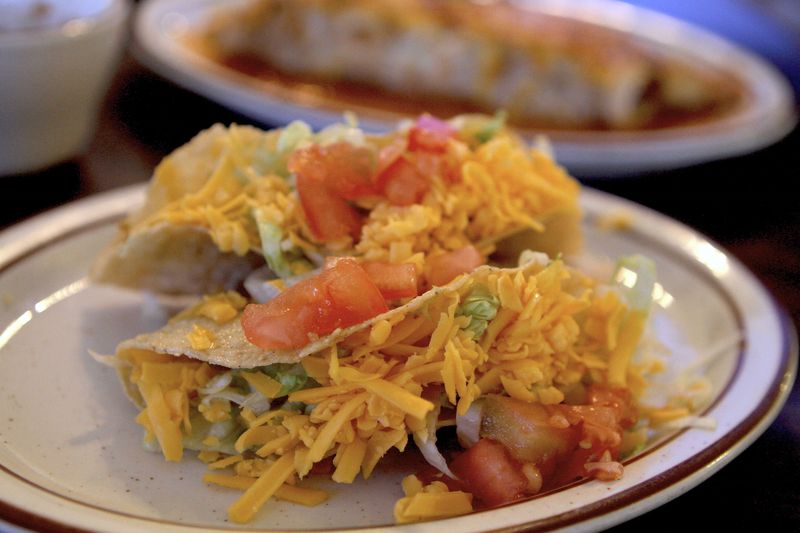
Mitla Cafe’s tacos that Bell straight up copied and capitalized on. Via LA Eater
In December 1951, Bell debuted his tacos at his burger stands, they consisted of: prefried taco shell, ground beef, chopped lettuce, shredded cheese and a chili sauce Bell used from the same condiment he used on his chili dogs. In Taco USA, Arellano quotes Bell’s enthusiasm when a white man ordered a “take-oh” and loved it.
“I didn’t invent the taco,” Bell boasted, “but I believe I improved it.”
I hope you laughed. I did.
This was just the beginning of Bell’s plagiarized, fake ass taco crusade. He opened a Mexican restaurant called Taco-Tia in 1954 and then sold it to open another chain called El Taco. He had opened six chains with his business partners by 1961, when he sold his shares to open a hot dog stand. It wasn’t until 1962 did he launch Taco Bell in the Los Angeles suburb of Downey. Bell created a franchising platform for it in 1964 and by 1967 there were a hundred Taco Bells in California.
What Glenn Bell did was commercialize the taco and made it palatable for white Americans who still thought of Mexican food as dangerous and too ethnic. Bell made bank on prefried corn shells that had a lot longer shelf life than fresh made corn tortillas. The corn shells were made and then wrapped in plastic until someone needed them, unlike corn tortillas that weren’t fresh a few weeks later. Taco Bell also opened the doors for other white business men to sell faux-Mexican cuisine across the U.S. that misrepresented what a taco really is all about — yet brought the taco forth into the mainstream.
These were just a few big moments in history that shaped the taco that we know today. I’ll get into specific histories of different kinds of tacos in future columns since there’s such a vast history between them all. It’s amazing how tacos’ roots can be traced back to ancient pre-hispanic times but has transformed over thousands of years of wars, feasts, trades, and migrations. They’re truly a hybrid food that has been molded through time, regions and cultures. Tacos have come a long way since its domination in the 20th century and continue to evolve today. For sure, tacos are undeniably tasty and are here to stay forever.

I love this a lot.
Glenn Bell was such an asshole.
Yvonne, this is so fascinating! Such great research! After you told us last week about Glenn Bell, I’ve been telling it to everyone I know. Forcing the conversation to tacos every time I see another human being. “He was a white motherfucker with a hot dog stand! A HOT DOG STAND!” And now I will add “This was just the beginning of Bell’s plagiarized, fake ass taco crusade” to my evangelism.
Hooray for taco tuesday!
When I first saw ‘biweekly’ I thought it meant, like, twice a week rather than once a fortnight, and was all like ‘wow, yvonne must be *really passionate* about tacos’. But now I wish it really was twice weekly, rather than fortnightly!
I didn’t know what fortnight meant until just this second. Thank you for clearing up a lot of confusion for me, re: Jane Austen timelines.
TACOS <3
I've loved tacos since my nieces introduced me to the King taco food truck here in LA. They have the beef tongue taco which is really really good.
Also we had tacos on Tuesday at work. Tacos are really in my life lately.
I love Leo’s Taco Truck at the corner of Venice and La Brea
yay for history; yay for tacos!
I want to eat so many tacos right now.
Thank you for this, I thoroughly enjoyed reading this. Also, taco bell, why the fuck do you put dairy in your guacamole(and then tell me it’s avocadoes)?
This is so great! haha I love your taco bell insults.
YAY
thank you for this. now, if only i could get my dad to stop going to taco bell. the whole “sand in the meat” fiasco didn’t stop him. tripping on the curb outside one and breaking a bone in his hand didn’t stop him. i’m not sure he CAN be stopped unless we somehow relocate him back to LA where he can get better tacos (unfortunately, baltimore is not great for tacos).
changing behavior is not an easy task… you’d have an easier time by introducing your dad to better tacos dorados. You might have to do some sampling and taste testing, hehehe. You might even have to try all the taco trucks/carts/restaurants in your area! YOU’LL SURELY HIT TACO HEAVEN!!!
(Also, this article makes me think that the peak of Chicanx culture was in the 40s. Maybe it’s the golden age of Chicanismx…?)
I wish I could! Unfortunately I live across the country from him (in Washington, where there are some better taco options imo). But I encouraged him to get out and try some new spots and he was googling while we were on the phone, so who knows…maybe taco heaven is just a few meals away for him… I did tell him about an AMAZING place I went to once with a friend but it’s 45min-1hr from where he lives/works so it’s unlikely he will make it down there. (See below– his taco bell habit is convenience motivated mostly)
What about having him try Del Taco? I know it’s not much better, but at least it’s not Taco Bell?
I don’t think we have Del Taco in Baltimore! It’s mainly a convenience thing, too- he works in a suburb and goes to a nearby Taco Bell for lunch 1-2x/week. He’s not like…passionate about it, and would prefer better tacos were they available. But they’re not, not within the time frame of an hour to get there, eat, and get back to the office. And he does like them all right– I think he’d probably still go once in a great while even if he DID move back to LA (where he spent a good part of his 20s/30s).
Nothing wrong with going out of convince. I live in SoCal and I can tell you I sometimes go to Del Taco out of convince as my regular spot(Lucy’s, which also open 24 hours) is isn’t on my way home.
I love this! Reading this makes my head feel as happy as my stomach feels from eating tacos! But with less bloating, so even better!
As always, this column is wonderful. Thank you for teaching me some taco history. :)
New favorite column. “Fake Ass taco crusade,” haha.
So that’s what it’s all about when other ingredients list says that the corn has been nixtamalizado! I knew that there was something with lime, but not why.
De acuerdo con everybody else, Taco Bell has now been demoted in my mind from mediocre pretend tex-mex to … I don’t even know what.
Also, I hate to act all Real Academia Española outside of the classroom, but shouldn’t it be Diccionario de mejicanismos?
I worked at a Taco Bell all through high school. The behind-the-scenes of how that food is prepared, you would not believe. The beef looks like it comes from the same supplier of Litchfield’s meals-in-a-bag.
From this column’s first post to Sunday August 30th was enough time for the craving for flour tortillas and scrambled eggs to claw its way through my brain into actually getting some. Having them for dinner that night and eating one for breakfast every day this week.
And tonight I’m going experiment with crispy shredded potato into em.
I love history and food history of the Americas has a special place in my heart as a person of Cajun heritage. And a weird kid who didn’t have friends but who needed losers who didn’t GET why Pre-Colombian history was cool. I had my PéPé, he got it.
Thank you for doing this column, it’s wonderful.
Unlike Mr. Bell, the heartless thief.
Loving this series :)
Well, I know what I’m having for lunch!
(Seriously great article, I learned a lot)
I super love all this history and detail and nuance, it’s fantastic.
Our friend is never not stocked with fresh corn and flour tortillas, and at least a few bricks of queso fresco. We end up batching like 8-10 cups of homemade salsa at a time here, because we are a long ass way from California! On a sweet side note, my wife’s mama always makes me those amazing little potato-stuffed taquitos when we visit (or when she visits), they’re so happy! TACOS FOREVER.
I meant fridge, of course. (Friend, fridge, same thing, no?)
Hey, its always there for you, it holds your stuff (food) and keeps it safe and ready, its got a reassuring voice (electric hum) when you talk to it late at night, it never judges you if you look inside and decide lunch is absolutely some chips and queso with a brick of chocolate for desert.
Fridge = Friend.
Thank you for this column on the best thing ever created.
Amazing research, wow
People always ask me why I don’t go to Taco Bell, and I just roll my eyes. Fake ass tacos, and asshole founder!
This is exactly what I wanted to know when I first ate “tacos” (canned beans, cheese, lettuce and salsa in a hard yellow shell from the grocery store, which entered my dad’s “cooking” repertoire sometime in my New England childhood) and thought, there must be more to this food that isn’t coming through here. I was so right. And this is so great. Thanks!
Please don’t call taco to the aberration you mention as “2 universal images… The u shape taco” that’s a U.S. invention and nothing to do with a taco.
That’s not a taco, please!
Neither “taco salad”
I’m very orthodox and proud of being Mexican, that Taco Bell have “hard shell tacos” doesn’t makes them tacos
Born in the late ’60’s in San Bernardino I grew up going to Mitla Cafe and Taco Bell…and Taco Tia, and Del Taco, and Naugles, and El Burrito, and Rosa Maria’s, and Bakers, and The Bean Pot, and Amapola, and El Tepeyac and Cielito Lindo in LA. It’s a shame you can’t tell the History of this Food without hating on White People who, like myself, have always had a love for this food – in all it’s guises.
And I’ve been cooking it myself since I was 6.